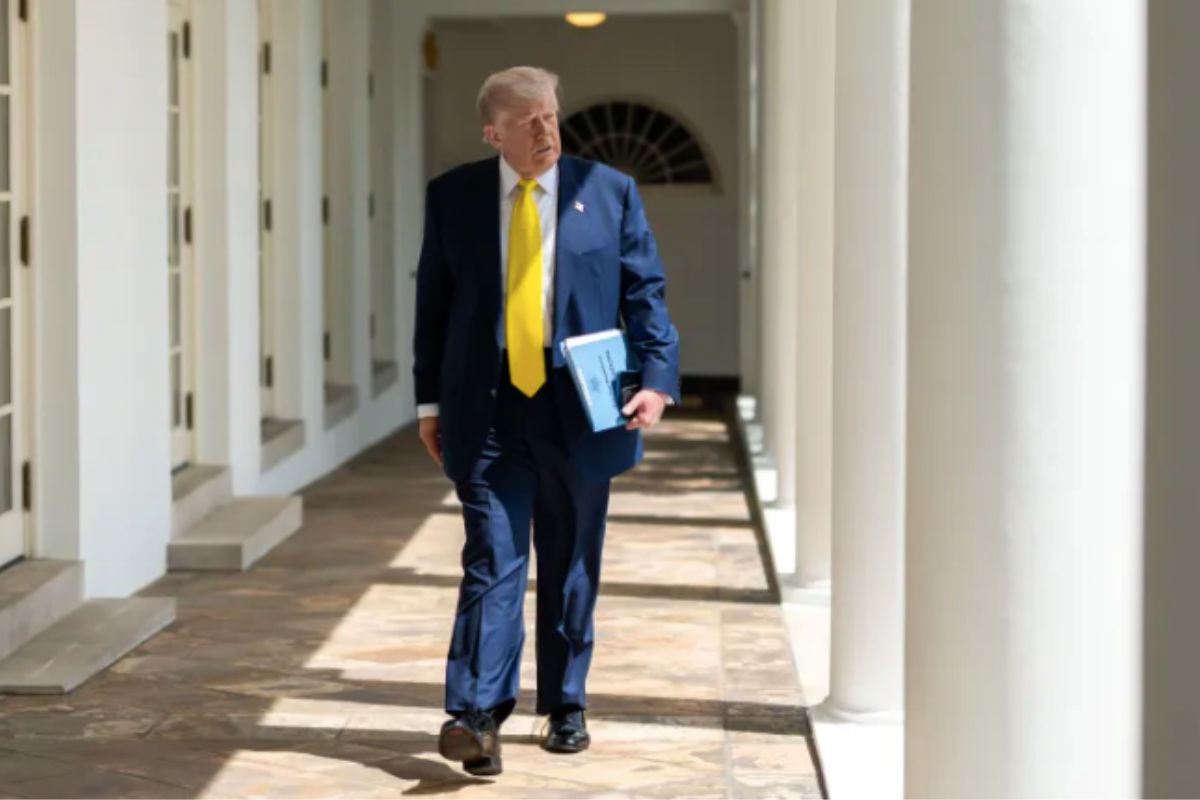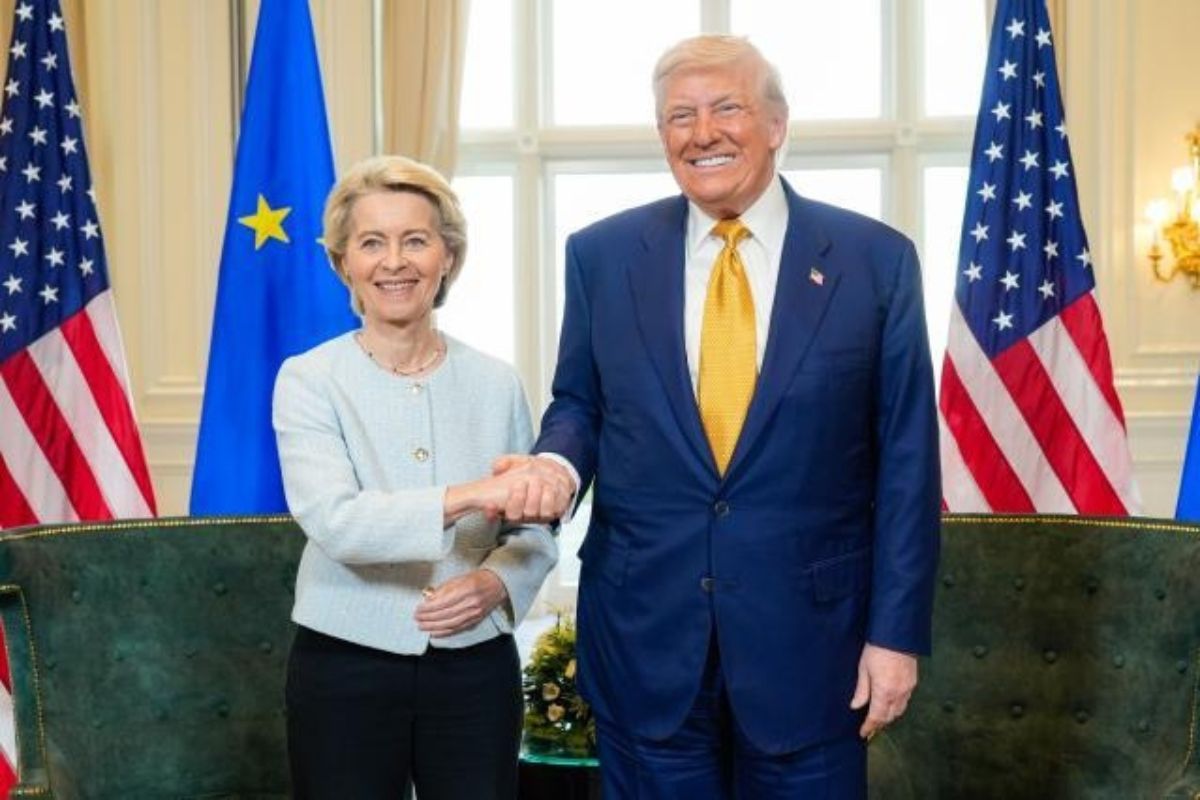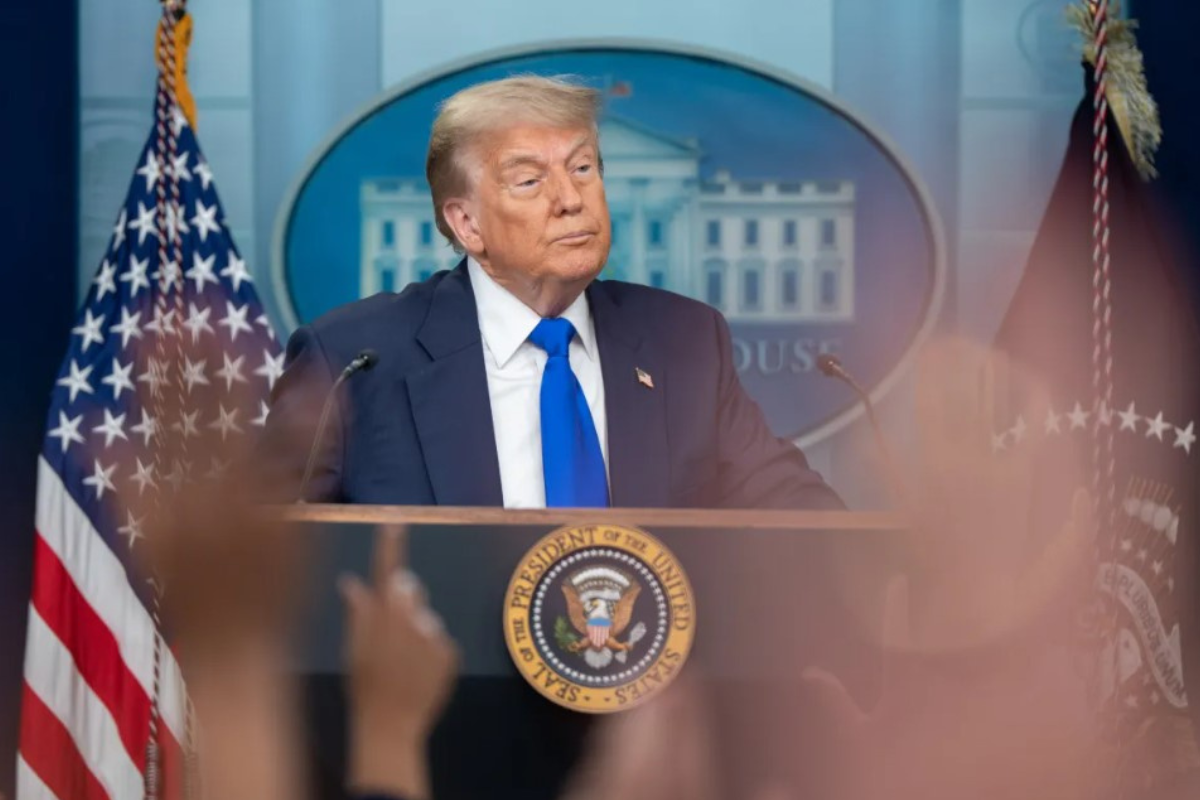The President of the United States has made a final plot twist in his tariff game. Trump has signed the executive order that reconfigures international trade through the imposition of new tariffs, which will take effect on August 7, six days later than expected. In general terms, the new minimum rate for nations with which the United States maintains a negative trade balance has been set at 15%, according to the White House.
In this regard, about 40 countries are subject to the 15% rate, including Costa Rica, Ecuador, Venezuela, and Bolivia. Meanwhile, in the case of those with which the United States maintains a positive balance, the tariff will be 10%. However, there are also levies above 30% for some countries that have not reached trade agreements with the U.S., including Canada (35%), Switzerland (39%), Algeria, Bosnia, Syria, South Africa, Serbia, Myanmar, Libya, Laos, and Iraq. In the case of Brazil, Trump confirmed a 50% tariff, accompanied by sanctions against the Brazilian Supreme Federal Court, in retaliation for the trial against former president Jair Bolsonaro. As for Mexico, he has granted another 90-day extension to prolong their negotiations.
According to Yves Bonzon, CIO of Julius Baer, Donald Trump is determined to increase public revenues through higher tariffs, and this is a critical aspect of his economic agenda to achieve a rebalancing of the U.S. economy and move away from chronic deficits. “Part of the U.S. master plan to rebalance global trade has China as an implicit target. Beijing has made it very clear that any sovereign state is free to conclude a bilateral trade agreement with Washington, but it cannot do so at the expense of China‘s interests. If other states end up exempting U.S. imports from tariffs, it will be hard for the U.S. administration to argue that it does not benefit from a most-favored-nation clause,” Bonzon notes.
From the perspective of Mark Dowding, BlueBay CIO of RBC BlueBay Asset Management, Trump has obtained virtually all the concessions he expected in the trade negotiations held so far. “Our analysis leads us to conclude that the U.S. has increased its average global tariff rate to approximately 18%. Based on this premise, we project annual tariff revenues of around $450 billion, compared to $77 billion in 2024; an increase equivalent to 1.25% of GDP. This revenue volume should help slightly reduce the U.S. fiscal deficit, bringing it below 7% of GDP next year,” Dowding explains.
Asia and Europe: Market Openings
Following the official announcement, Trump celebrated his new trade policy on the social network Truth with a clear message: “A year ago, the U.S. was a dead country, now it is the most attractive in the world.” For their part, both Asian and European markets opened slightly lower, showing that uncertainty remains entrenched in the investor community. In Asia, the MSC Asia-Pacific fell 0.4%, the Kospi 1.6%, and the Nikkei 225 0.6%. According to experts, these declines reflect the announcement of new tariffs ranging from 10% to 41% on imports from India, Taiwan, Korea, and other countries.
In Europe, the main indices also reacted with “moderate negativity”: the DAX and CAC fell 1.6%, and the FTSE 100 dropped 0.7%. It is worth recalling that the trade agreement between the U.S. and the European Union had boosted the STOXX 600 by 0.7% on July 28, but the August 1 decision reversed that slight optimism.
“Although the agreement between the U.S. and the EU avoided a harmful trade war, its real effects remain to be seen. While progress was made in strategic sectors and energy cooperation was strengthened, the pact leaves several structural issues unresolved. Still, in a world marked by geopolitical fragmentation and economic risks, this understanding represents a diplomatic reprieve. It will be crucial for both parties to continue working on a joint agenda that prioritizes stability, fair trade, and shared innovation,” says Antonio Di Giacomo, Financial Markets Analyst for LATAM at XS.
In Bonzon’s view, the markets have been pricing in the trade war for some time. “Collective wisdom is probably right in asserting that the trade war will not occur. Nevertheless, the rest of the world has an opportunity here to move forward and continue fostering a friendly trade framework,” he comments.
Investors Prepare
The new direction of U.S. trade policy is a clear example of how the world is transforming at an unprecedented speed. “While the global economy moves toward decarbonization to achieve the goal of net-zero emissions, trade wars are slowing globalization, demographic change is causing a shrinking labor force, and digitalization is advancing at a dizzying pace. We are now living in the era of geoeconomics. Although the idea of using economic tools for political purposes is not new, it is hard to find another moment in history when foreign policy, security, and the economy have been so intertwined and acting simultaneously with such intensity. And, logically, this has a direct impact on both economies and markets,” argues Hans-Jörg Naumer, Global Head of Capital Markets & Thematic Research at Allianz Global Investors.
According to the asset manager, for investors, this means ensuring that their investments are well diversified in this constantly changing “multiverse” of opportunities and being prepared to adjust their portfolios. “The challenge is not only to rebalance a portfolio to reflect these changes but also not to lose sight of diversification. In fact, a well-known saying, deeply rooted in portfolio theory, makes perfect sense here: don’t put all your eggs in one basket,” says Allianz GI.
In their view, multi-asset solutions could play a determining role here. “The logic is simple: why not design a portfolio tailored to the investor’s individual risk appetite that combines different asset classes? And it doesn’t have to be limited to just stocks and bonds,” they argue.




